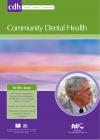Community Dental Health

- Cover Date:
- December 2009
- Print ISSN:
- 0265 539X
- Vol:
- 26
- Issue:
- 4
Understanding politics? Some lessons from Swedish dentistry.
Background Medical and dental care are dependent on political settings for legislation and financing. The professionals in these organisations need to understand the political logic that shapes the environment of their organisation. A description of Swedish dentistry and recent legislation reports from commissions and bills to parliament from 1997 are analysed. Aim The aims are to describe changes in the environment for dentistry in Sweden from 1998, to analyse the underlying political logic, and to point to some lessons to be learned. Method The description is analysed using theories from strategic management and from decision-making. Results The objectives changed from a formal emphasis on prevention to insurance against high cost for the patient. Some ideas keep recurring in the political debates even if scientific logics contradict them. Conclusions Health care system research methods and the “garbage can†model of decision-making can be used to describe and to gain a better understanding of the politically governed environment. Some political issues keep recurring in spite of earlier rational rejections. A better understanding of the political logic that forms the environment for an organisation is needed for a successful adaptation to that environment.
Key words: Dental insurance, dentistry, health care systems research, non-rational, organization theory, Public Dental Health Service.
- Article Price
- £15.00
- Institution Article Price
- £
- Page Start
- 239
- Page End
- 243
- Authors
- S. Ordell, B. Söderfeldt
Articles from this issue
- Title
- Pg. Start
- Pg. End
- Evaluation of the direct and diffusion methods for the determination of fluoride content in table salt
- 204
- 210
- Rural Mexican immigrant parents’ interpretation of children’s dental symptoms and decisions to seek treatment
- 216
- 221
- Assessment of HIV/AIDS awareness among 500 patients referred to the Ankara University Faculty of Dentistry
- 222
- 226
- Professional charges not reimbursed to dentists in the US: evidence from Medical Expenditure Panel Survey, 1996.
- 227
- 233
- Quality of life in patients with dental conditions: comparing patients’ and providers’ evaluation
- 234
- 238
